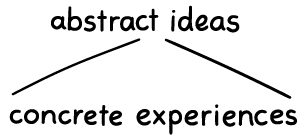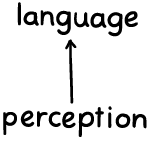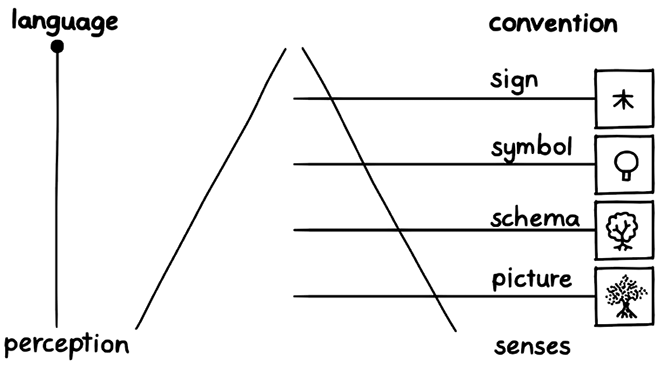Why do we like images?

Because they help us understand things.
But what does that mean?
Understanding
Well, the world is complicated. And in order to make good decisions we need to know what is going on. Language can help us structure the world. So one way to understand things is to find the right words.

We perceive colours and shapes, recognise a familiar object, and find the proper word for a concept. Then we can use this word to think and talk about our experience.

Philosophers like Immanuel Kant have discussed in great detail how this transition from sensation to thought might work.

The point is: When we understand the world, we move from concrete experiences to abstract ideas.

Perception and Language
One might also put it like this: We rise from the lower level of perception to the higher realm of language.

Some people hold language in such high esteem to claim that smart people only think with words, logic or mathematics. Images are useless trinkets for people who are too lazy or too stupid to think.
But is that true?
Functions of Images
Images can support a variety of cognitive tasks. I like to distinguish four different image functions: picture, schema, symbol, and sign.
Let’s have a look at four images of a tree:

A picture shows a concrete tree, for example the limetree in front of my house. Such an image is usually rich in details and close to the actual experience. Photographs or realistic paintings usually serve as pictures.

A schema illustrates a typical tree. It captures some vital features, and it is obvious that this image does not show one particular thing but the essence of a category. Quick hand drawn sketches are often schematic drawings that show the gist of something.

A symbol represents the idea of a tree. What a symbol means often depends on an agreed-upon context. For instance this symbol might stand for “tree” but also for “nature” or “wood”. Symbols are often kept simple so that they are easy to recognise.

A sign is a pointer to the concept “tree”. The meaning of a sign is not self-evident, we have to learn it, just like we have to learn the meaning of a word. This makes them highly flexible, and we can even invent signs for abstract things like “infinity” ∞. Signs don’t have to resemble the thing that they refer to. They are very close to language—and purely conventional.
A ladder between perception and language
These different types of images can connect our ideas with the material world.

They support our rise towards abstract ideas to reveal a general structure of the world.
But we can also climb down this ladder and go back to concrete experiences. Visual examples can make it easier to apply our ideas to real-life situations. They also make sure that our thoughts are grounded in reality.
Infographics
Together with language these images can serve as a toolbox, which gives us the power to make abstract thoughts visible.

Infographics are diagrams like charts, maps, data visualisations or instructions. They make abstract problems visible so that our perceptual apparatus can solve them.
To make compelling infographics we must sharpen our abstract thinking. Depending on what we want to show, we need an understanding of disciplines like mathematics, statistics, logic, information architecture, and storytelling.

On the other end we need to understand visual perception, so that we can arrange shapes, colours, text, etc. into a “gestalt”: a structure, in which the parts form a clear unity.

There are rules to this, but they can only get you so far. The design of visuals heavily depends on the training of our perception. We have to develop an intuition for what works and what doesn’t.
Useful images
In everyday life, we encounter all sorts of infographics, including for example the interfaces on our mobile phones. They all make complex issues perceptible.

Sometimes they are helpful, sometimes not so much.
When images represent the underlying structure properly, when they work, then they help us understand complex things—and each other.
Before you go
If you enjoyed this article, then subscribe to my mailing list to receive more animated stories!



3 comments On Show me!
Just love this work of yours. It’s so beautifully crafted. Pure elegance! I’d never thought about the gradations between perception and language before – at least, never seen it so wonderfully laid out. Thank you!
So – semiotics. Yes. Charles Sanders Peirce took Kant’s Idea (theory) and developed it further. I like what you have done taking it from a system based on words (left hemisphere language) to images which the whole of brain – right and luff hemispheres comprehend and apprehend.
The pictures you crafted in this post really depict the idea of this blog in itself